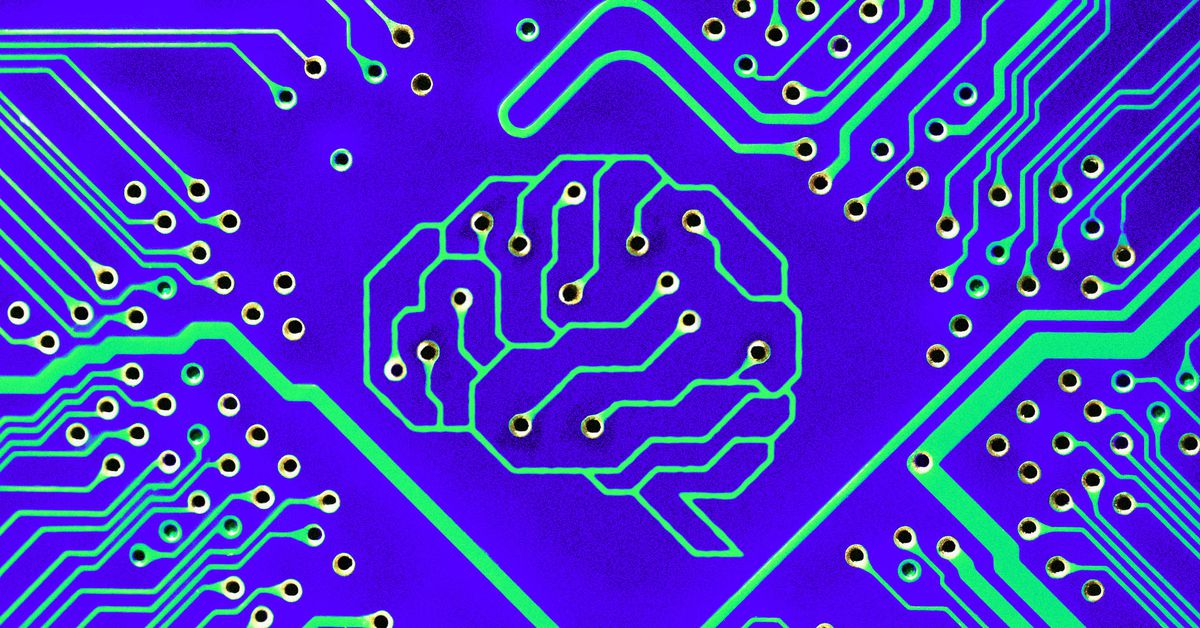The US Department of Energy (DOE) thinks AI can speed up the process of connecting new energy projects to the power grid.
It announced $30 million in funding now available through its Artificial Intelligence for Interconnection (AI4IX) program. The DOE is interested in fostering partnerships between grid operators and software and energy project developers to get new sources of electricity online faster.
The plan is to use AI to streamline the interconnection application process that’s currently painfully slow. The delay is holding up efforts to get new solar and wind farms up and running. Pressure is building to clear that backlog with electricity demand on the rise — ironically in no small part because of the artificial intelligence boom.
Pressure is building to clear the backlog with electricity demand on the rise — in no small part because of the AI boom
As it is, it takes up to seven years to connect a new electricity generation project to the grid in the US, and wait times have been increasing. As a result, there’s an enormous backlog of 2,600 gigawatts worth of new energy generation and storage projects awaiting interconnection. That’s roughly twice as much capacity as the US currently has for generating electricity today, according to the DOE.
Why does it take so long to connect to the grid? Utilities and grid operators need project developers to complete a series of studies meant to determine what kinds of grid upgrades might be necessary and how much that will cost.
The slow interconnection process is also a relic of an energy system designed around fossil fuels — when developers would have relatively few large power plants in the queue. Power grids with more renewable energy tend to be less centralized, with electricity coming from a more distributed network of smaller solar, wind, and battery projects. That means more applications to review.
New solar and onshore wind farms are generally cheaper sources of electricity than coal or gas now, and they don’t create air pollution or contribute to climate change. You can see those perks reflected in what kinds of energy infrastructure is being built in the US. More than 94 percent of new energy capacity waiting to connect to the grid is carbon-free, primarily solar, wind, and batteries.
Utilities and grid operators might be able to get through interconnection applications for those projects faster if they can use AI, the DOE suggests. It says the current manual process for reviewing applications is labor-intensive — an issue made worse because submitted applications are often incomplete. Communicating with developers so they can fill in missing information to correct their applications can lead to significant delays, the DOE says.
Through AI4IX, the DOE wants to use existing AI algorithms to quickly spot deficient applications and notify their authors. Utilities might use AI software trained on accurate applications, for example. The DOE is accepting proposals for the first round of AI4IX funding through January 10th, 2025, and expects to announce awardees sometime in winter 2025.
Federal agencies are bracing for turmoil once President-elect Donald Trump steps into office next year. Elon Musk and Vivek Ramaswamy’s plans for Trump’s “Department of Government Efficiency” include “mass head-count reductions” across federal agencies. And Project 2025 talks about gutting programs within the DOE’s Grid Deployment Office, which is overseeing AI4IX program funding.
But despite promises to undo Joe Biden’s clean energy legacy, Trump’s team hasn’t specifically targeted funding from the Bipartisan Infrastructure Law as much, which funds the initiative.
Moreover, Trump’s pick to lead the Environmental Protection Agency, Lee Zeldin, says he wants to “make America the AI capital of the world.” The pledge reflects the incoming Trump administration’s deregulatory agenda, particularly when it comes to any rules that might hinder the growth of energy-hungry AI data centers.
Electricity demand from data centers could rise 160 percent by 2030 with the boom in AI, according to Goldman Sachs Research. So getting more electricity generation online to meet that demand could continue to be a priority for the DOE moving forward.
Read the full article here














